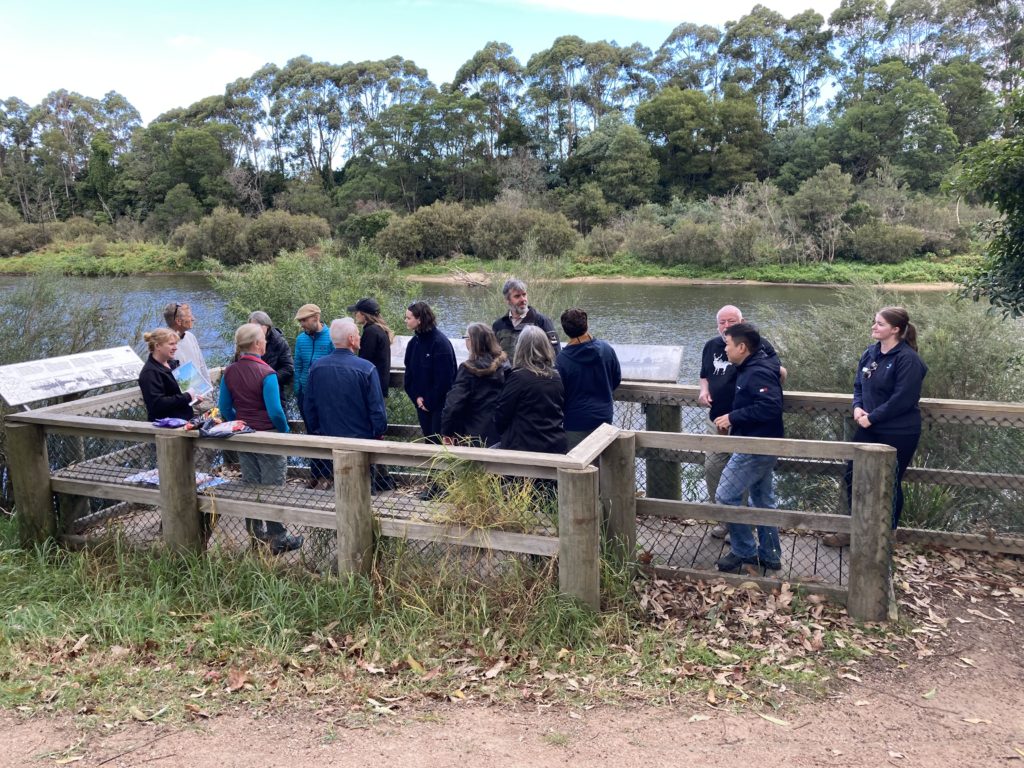Victorian and New South Wales agencies and community members have come together to talk about the Snowy River.
The Snowy Advisory Committee (SAC) along with representatives from the NSW and Australian Government Department of Climate Change, Energy, the Environment and Water (DCCEEW), Victorian Department of Environment, Energy and Climate Action (DEECA), Snowy Hydro and the East Gippsland Catchment Management Authority (CMA) visited the Snowy River at Marlo and Orbost to discuss environmental flows and the Snowy River Estuary.
“East Gippsland CMA has been working with NSW DCCEEW to incorporate flow recommendations that improve the condition of the lower Snowy River and estuary” said East Gippsland CMA Chief Executive Officer, Bec Hemming.
“These recommendations are about maintaining an open entrance during late summer and autumn, a time when historically the estuary has closed due to reduced catchment and environmental flows.”
The daily amount of water released from the Jindabyne dam is planned twelve months in advance by the NSW Government who take advice from the SAC and other organisations. As part of the 2024/2025 environmental water release plan, a trial will be conducted to monitor estuary mouth behaviour in response to varying volumes of environmental water releases over specific time intervals.
“This monitoring aims to assess the impact on both the entrance mouth condition and water quality in adjacent wetland and waterways during late summer and autumn of 2025.” Bec said.
As well as agencies coming together, a series of presentations to community members was held at the Marlo Angling Club. The presentations included topics such as the importance of environmental flows, planned water releases, fish health and the trial around the estuary mouth.
Community members expressed their strong connection to the river and desire to maintain an open entrance which has multiple benefits to them including reducing flooding impacts and avoiding impacts to native fish and other aquatic species.
To reiterate the importance of water releases at the right time for fish and estuary health, a canoe trip into Cabbage Tree Lagoon was made for a firsthand experience of a site which provides important fish populations.
The engagement was funded as part of the Victorian Government’s $248 million investment into improving the health of waterways and catchments in regional Victoria.



